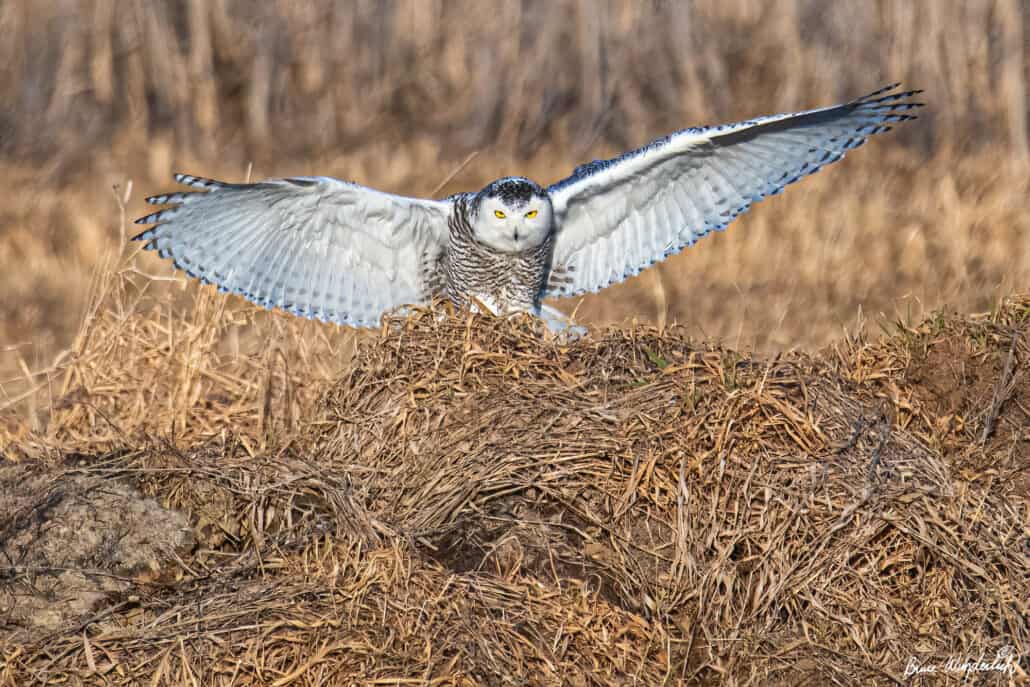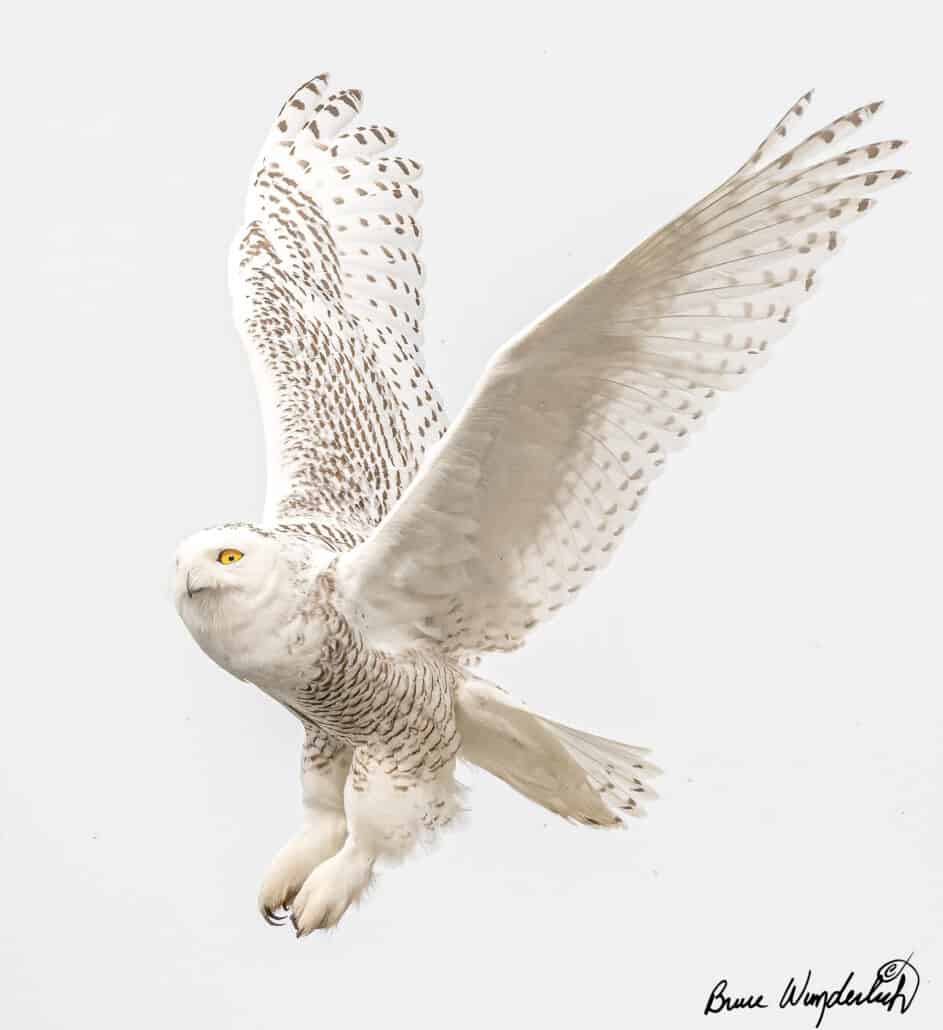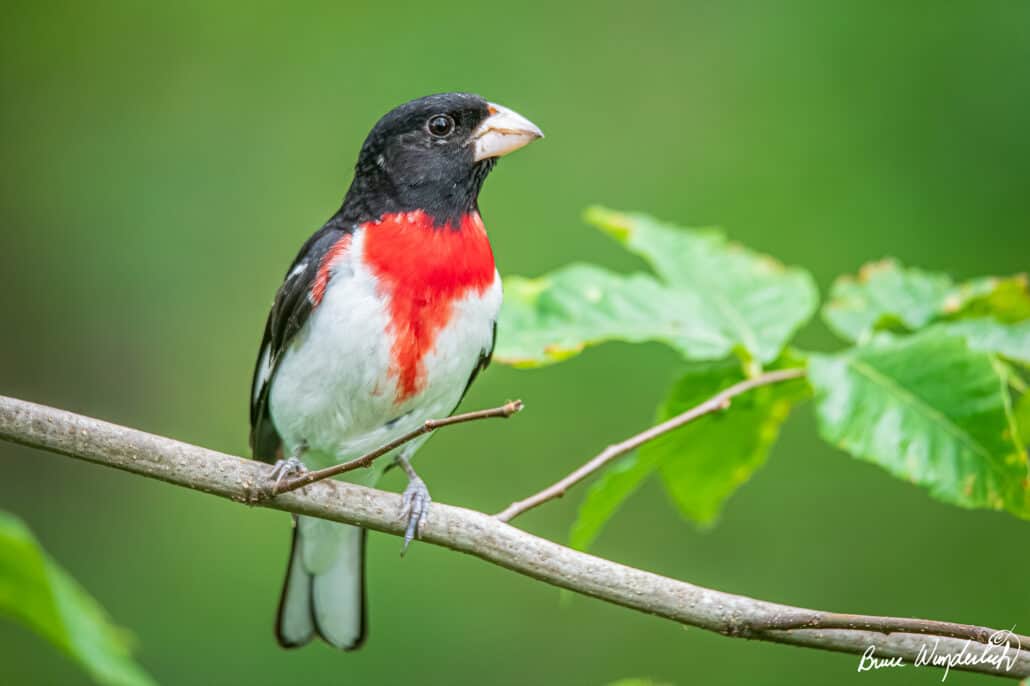
Snowy owls are a rarity in southeastern Ohio, so it’s exciting news when one is spotted nearby. After hearing about a snowy owl turning up not far from my home, I decided to take a drive to check it out and maybe get a few photos.
My wife (who isn’t a birder) and I set out at daybreak with my camera gear. The drive to the area was only about an hour. I wasn’t sure how I would locate the owl, but I expected that all I would have to do is look for a bunch of cars and tripod legs. When we arrived at the area where the bird had been the day before, I found no cars, no other photographers, and no owl. I drove slowly through the area, then turned around and went back for a second look.
As I drove past a swampy field shimmering with early morning frost, I saw a rock about 100 yards out in the field. Wait, that’s no rock! It was the snowy owl. Turning around again, I looked for a place where I could pull my car entirely off the road. Often when I arrive at bird sites like this, cars are parked anywhere and everywhere, sometimes nearly blocking the road. Such behavior enrages the locals and gives birders a lousy reputation.

After finding a proper parking place, I looked for a spot where the sun would be at my back, where I could point my shadow toward the snowy. I was at least 100 yards from the big, white bird, but still watched out for signs that I might be disturbing it.
These are signs to watch for:
- fidgeting
- repeatedly staring at you
- head-bobbing
- changing position
Signs that the snowy is unbothered by your presence:
- preening
- stretching
- sleeping
- hunting
Satisfied that the owl seemed comfortable with my presence, I set up my Nikon D850 with a Tamron 150-600mm lens, placing it on a tripod with a gimbal head.
Before I shot any images, I checked all my camera settings. With the sun at my back, I had plenty of light, which allowed me to use a fast shutter speed and a reasonably low ISO. Using my camera’s light meter, my settings were shutter speed 1/3200, ISO 720, and aperture at f/6.3. The tricky part of photographing snowy owls is that they are mostly white; this first-year male had some brown coloring and a white face.
My next step was to make sure that my exposure did not blow out the detail in the owl’s white face. I took a test exposure and checked the exposure histogram, making sure that there was no data pushed against the right side of the histogram. I also checked the highlight warning to ensure no areas of overexposure (“blinkies”) on the owl’s face.
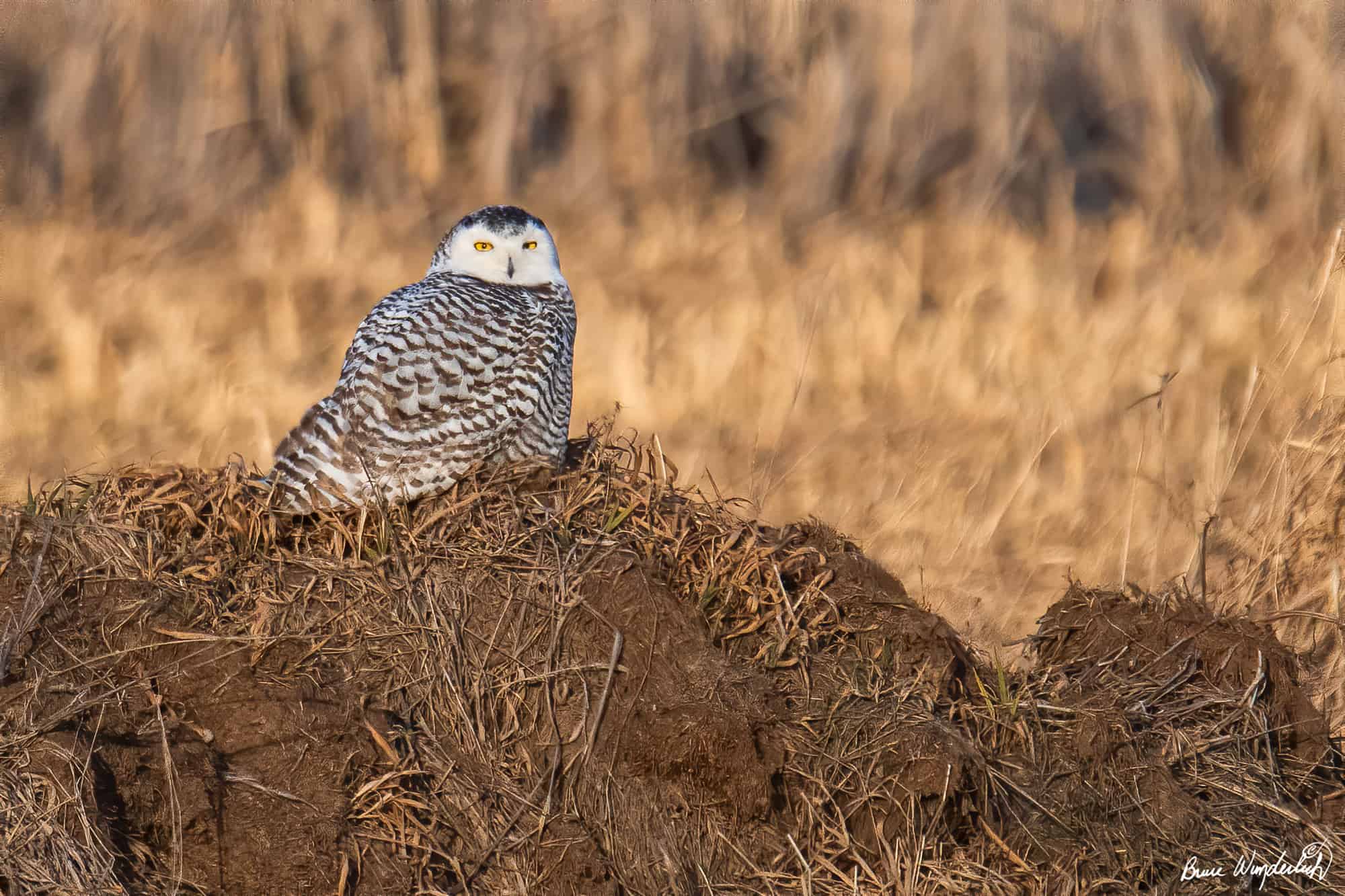
There were blinkies on the owl’s face, and the histogram did show information against the right side, so I changed my f-stop to a smaller opening, f/7.1, which allowed less light to reach my camera’s sensor. Taking another test shot and satisfied with the improvements, I was ready to capture some images of the snowy.
The reason I chose such a fast shutter speed was because I was hoping for some action shots. The snowy, however, was asleep for the most part, occasionally opening its eyes and looking over the field.
After a few hours of watching the inactive owl, my non-birding companion was growing restless. I remembered that we passed a filling station about five miles back. While the owl was sleeping was an excellent time to take a break, I thought, so we headed to the filling station. The filling station also sold pizza, convenient sustenance that might buy me some more time with the snowy and my trouper of a wife. With our pizza in hand, we headed back to the owl.
The owl was where we left it, and still no other birders had arrived. We finished eating (pretty good for filling station pizza), and I sat my camera back up, hoping all the while that the snowy would wake up. Soon, it did. As it became more alert, I watched for signs that it might be looking for a snack from the field.
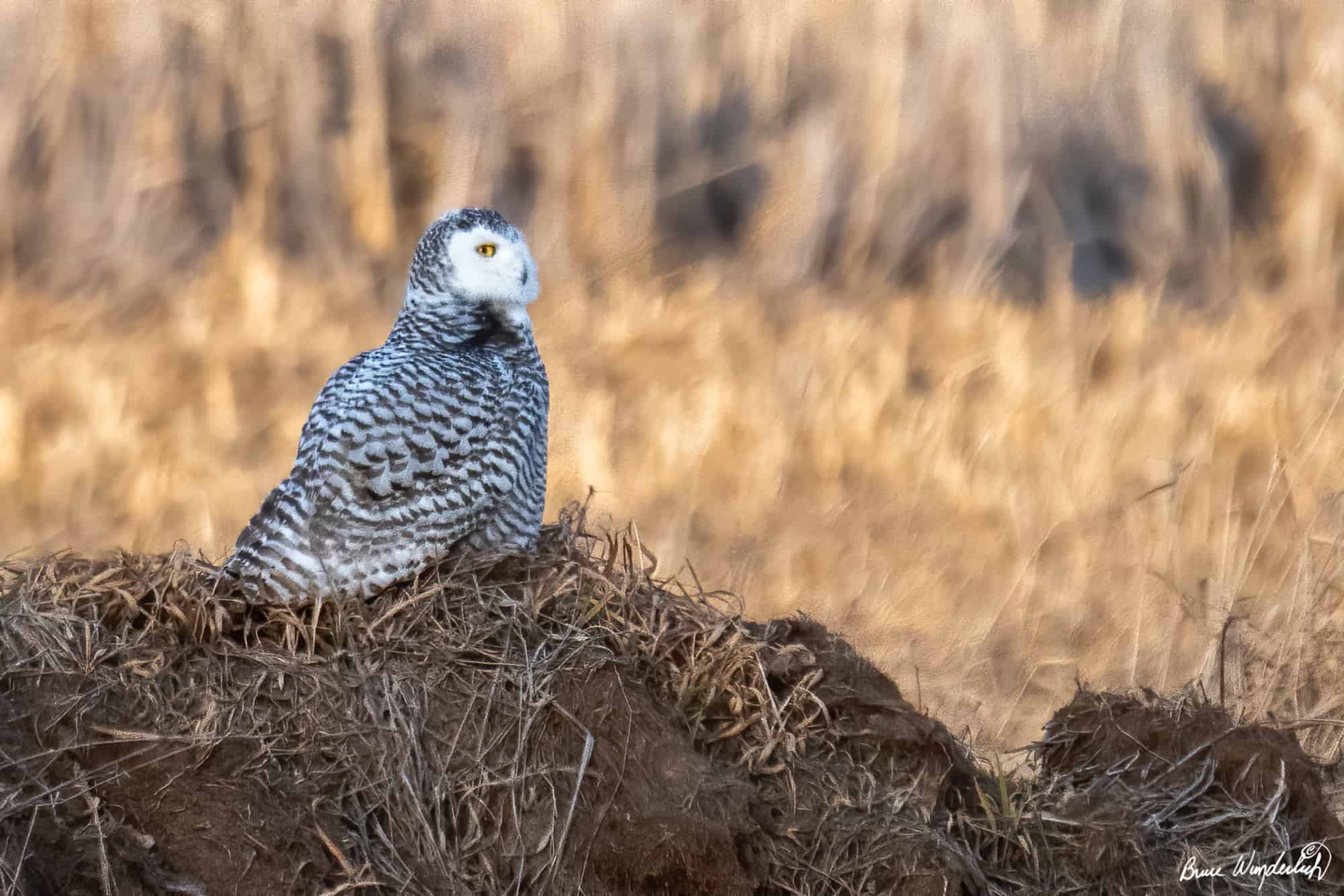
The snowy started bobbing its head, which was promising. Head-bobbing compensates for an anatomical limitation: an owl’s eyes are in a fixed position; owls can’t move their eyes as we humans do. Head-bobbing helps an owl judge the location and distance of things around it, triangulating objects, including potential prey. The owl spotted something, locked on it, and took flight to catch it. From my position, I couldn’t tell if it was successful.
I grabbed a couple of images as the owl flew back to its original perch. A few birding friends soon joined us and said they were happy to see me there because they were not sure they would have spotted the owl on their own. Succeeding in a flight shot, we headed for home.

Unfortunately, this story does not have a happy ending. The next day I received word that the owl had been hit by a car and was taken to a wildlife rehab center in Wheeling, West Virginia.
I have seen three snowy owls in my life, and two of them were later hit by cars. In general, owls often hunt close to roads because that is where they find rodents. Rodents frequent roadsides to feed on litter that is thrown from passing cars. Please, for the sake of owls, don’t litter!
The following day I received word that the snowy did not survive the night at the rehab center; cause of death was a head injury. It had been such a joy to spend time with this handsome creature, and its tragic ending breaks my heart.

